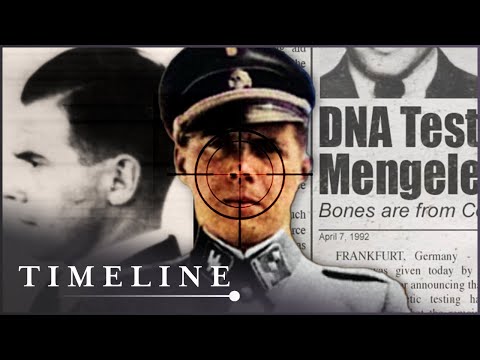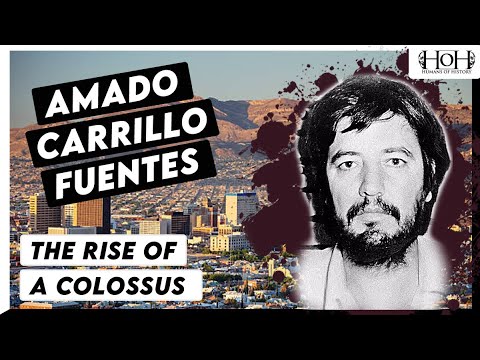But sadly, plenty of other evil masterminds and sadistic killers have gotten away with horrible crimes too. These ten evildoers may not be as well known as the Zodiac Killer or Jack The Ripper, but their (alleged) misdeeds have never been punished, either. And as time marches on, the world may never know the full truth of the people behind these terrible tales.
10 Bela Kiss
Bela Kiss was a Hungarian serial murderer who cops believe killed 24 people. Kiss was nicknamed the “Hungarian Pickler” because he preserved his victims’ bodies in large barrels. Born in Hungary in 1877, he had a rough childhood. In 1912, only a year after marrying his much younger wife, he discovered she was having an affair. Soon after, she and her lover would disappear, although Kiss claimed they had left together for a better life in America. The truth was that he killed both of them, becoming Kiss’s first victims. This was the start of his murderous spree, but for the rest of the victims, he lured women in. Through personal ads in the local Budapest newspaper, he placed ads under the name of Hoffman, claiming to be a lonely widower looking for marriage. He connected with women who were generally well-off and whose families were not living nearby. His good looks and personable charm helped to attract them. He was able to even have some of the women sigh over their wealth to him or give him money. He was soon seen around town escorting these various women, but never for more than a month or so. When he had garnered all he could from them, he would lure them to his home—where he only had a live-in housekeeper—and strangle them, much like he had his wife and her paramour. The swindling and murderous activities continued until a neighbor complained about the number of barrels he was amassing on his property. Thinking they were alcohol, she called the police. Upon investigation, Kiss laughed them off, stating that they simply contained gasoline in preparation for the possible advent of war—this was 1914, after all. The police accepted his word and never looked inside any of the barrels. When Kiss was called to serve in World War I, he left his house—and the corpse-filled barrels—in the care of his housekeeper. After a few years, it was believed that Kiss might have perished in the war. Still thinking the barrels contained gasoline, the police went to Kiss’s house to secure the precious war-restricted commodity, only to find the bodies of 23 women and one man. All the victims had been strangled with wire and then mutilated with knives or scissors before being preserved in wood alcohol in the barrels. The bodies were also drained of blood. Kiss was never caught; he seemingly disappeared. People claimed to have seen Kiss over many years, including a New York detective in 1932. The last reported investigation into a sighting was four years later, in 1936. Rumors circulated that Kiss, by now in his late 60s, was working as a janitor at a New York City apartment building on Sixth Avenue. When police stopped by to check it out, they found the janitor had vanished. No one knows what happened to Bela Kiss, but wherever he went, Bela Kiss was never brought to justice.[1]
9 Josef Mengele
Josef Mengele, the German SS officer and physician, was known as the Angel of Death during World War II. At the Auschwitz and Birkenau concentration camps, Mengele performed horrific gas chamber experiments on Jewish prisoners. He was one of a team of Nazi doctors who selected victims and killed them with gas and nerve agents, and he seemed particularly ruthless about his work. During his horrific career, the physician also performed awful experiments on unwilling subjects, including many sets of twins. Mengele’s story gets crazier after World War II. The disgraced doctor fled to Argentina with the help of other former SS officers. After changing his name, he moved to Paraguay in 1959 and Brazil the following year. The whole time, he was being sought by West German and Israeli officials. But despite intelligence work by Mossad and other organizations, trackers never found Mengele. One day in 1979, he was swimming off the coast of Bertioga, Brazil, when he suffered a stroke and died. Initially, the death did not cause alarm. Having changed his identity, he was buried under the false name of Wolfgang Gerhard. However, Nazi hunters stayed on the trail. In 1985, persistence paid off. Gerhard’s remains were disinterred and identified as actually being Mengele. It brought some closure, but the Angel of Death managed to thwart justice for nearly four decades after World War II and was never captured alive.[2]
8 Frank Morris and the Anglin Brothers
This unsolved mystery may remain so for eternity. In 1960, Frank Morris was sentenced to serve a prison term at Alcatraz. The infamous penitentiary was built in 1934 on an island in the middle of San Francisco Bay. Isolated in the water more than a mile from San Francisco, it was designed as an inescapable jail. But when brothers Clarence and John Anglin got to Alcatraz in 1961 and befriended Morris, the trio decided to put the island’s reputation to the test. Watch this video on YouTube The three men stuffed plaster dummies in their cell beds in the middle of the night. With roving guards believing the men asleep, they quietly escaped through carefully-cut holes in their cells. Once outside, they fashioned a makeshift raft out of raincoats and set sail into the bay in the middle of the night. They were never seen again. Initially, prison guards assumed the three men had been eaten by sharks. That is still a distinct possibility, but ocean currents would have undoubtedly brought body parts up to shore. Instead, no trace of the men’s remains, clothes, or raft has ever been found. Because of that, authorities aren’t actually certain whether they successfully escaped or not. The mystery received a boost in 2018 when the FBI revealed the existence of a letter from Anglin. In the letter, the prisoner claimed all three men survived the escape. The FBI is skeptical that the real Anglin wrote the letter, but its existence has been a boost for Alcatraz conspiracy theorists.[3]
7 Bible John
Between the spring of 1968 and the fall of 1969, three women were murdered in Glasgow, Scotland. Patricia Docker was strangled to death in February 1968. Her crime went unpunished. A year later, Jemima McDonald was strangled in a nearby neighborhood. Two months after that, Helen Puttock was also brutally killed in Glasgow. Watch this video on YouTube By then, cops started to realize similarities in all three murders. DNA testing wasn’t the norm back then, but police picked up on patterns of how the girls were killed and where they were found. Cops also began to hone in on a description of the killer: a redhead between the ages of 25 and 35 who was around 6 feet (1.8 meters) tall. Upon distributing a sketch to the media, cops labeled the killer “Bible John.” It came from Puttock’s death. She and her sister had met two men during a night out on the town. Both men were named John. Puttock’s date for the evening had an infatuation with quoting the Bible. Throughout the night, he delivered impassioned sermons from the Book of Moses. The women jokingly called him “Bible John.” Hours later, after splitting up for the night, Helen was murdered. The biblical name stuck. Since the killings, police have interviewed and eliminated thousands of potential suspects. Many true crime followers think convicted Scottish serial killer Peter Tobin could be Bible John, but no link has been found. In recent years, Glasgow police have hinted at new evidence, but nothing conclusive has ever come out.[4]
6 Frank Matthews
Frank Matthews was a notorious drug kingpin in the early 1970s. The New York City native was one of the largest suppliers of cocaine in the United States. His operation stretched from New York to Miami. Police believed Matthews cleared more than $20 million from his cocaine empire. He had a network of over 200 dealers working for him, all selling cocaine he bought from Colombian sources. His operation was so successful that it destroyed the profits of the rest of New York City’s drug dealers. This led to tensions between Matthews and the other dealers. In 1972, two of his associates were killed in a drive-by shooting. Matthews himself narrowly avoided being killed when a bomb was placed under his car. In 1973, after an arrest, Matthews jumped bail and disappeared. Some believe he was killed by rivals. Others say he went into hiding to avoid the lifelong prison sentence that surely would have followed. Whatever the case, he simply vanished. Matthews disappeared from public life altogether, presumably with drug money stashed safely from prying hands. Some wonder if he changed his name and settled into a quiet lifestyle. There have been no reports of his involvement in criminal activity since he fled. Wherever he is, Frank Matthews remains one of the most successful drug dealers in American history, as well as one of its most elusive fugitives.[5]
5 The Freeway Phantom
The Freeway Phantom was a self-given moniker for a Washington, D.C. serial killer who has never been identified. The killer was active around America’s capital in the early 1970s. In total, he killed six young black women over a 17-month period. Like the Zodiac Killer before him, the Freeway Phantom sent creepy messages to the police. Watch this video on YouTube After murdering 18-year-old Brenda Denise Woodard in November 1971, police found a note in one of her pockets: “this is tAntAmount to my insensititivity to people especiAlly women. I will Admit the others wheN you cAtch me iF you cAn! FRee-wAy PhanTom.” The “Phantom” name stuck as police found more bodies near highways and other main thoroughfares around Washington. Police worked leads in the six deaths, including one long look at two ex-cops who were convicted of a separate murder. However, they failed to make any headway in finding the killer. In 1974, the FBI stepped in and added to the list of suspects. The Freeway Phantom appeared to leave as quickly as he arrived, though. No more deaths were linked to his pattern after that awful 17-month period early in the decade, and soon, the case went cold. The investigation is still active in D.C. to this day, though cops have been criticized for shoddy evidence-keeping and a lack of progress on the awful case. Now more than five decades after the murders, it’s likely the Freeway Phantom’s identity will never be known.[6]
4 Victor Gerena
Victor Gerena was an employee of a Wells Fargo armored car in West Hartford, Connecticut, in 1983. That summer, he was recruited by the militant group Los Macheteros to help with a bank heist. The activist group wanted independence for Puerto Rico. Their clandestine run had previously targeted American government officials. Now, they were seeking money to fund their operations. Gerena’s knowledge of the armored car depot made him a natural recruit for Los Macheteros leader Juan Enrique Segarra-Palmer. When Gerena led the heist on September 12, 1983, it all fell into place. The Wells Fargo employee tied up two of his co-workers and injected them with sedatives to make them fall asleep. He then loaded more than $7 million cash into a rental car and drove off. At the time, it was the largest cash heist in American history. Neither Gerena nor the money was ever seen again. Segarra-Palmer wasn’t so lucky. In 1985, the FBI tracked down Segarra-Palmer and eight of his Los Macheteros peers in Puerto Rico. They were extradited to Connecticut and convicted on a variety of charges relating to the bank heist and other events. The ringleader was sentenced to 55 years in prison and served about two decades before being freed in 2004. Gerena has likely fared far better, though: he was never found. None of the money has ever been accounted for, either. Gerena remains on the FBI’s Most Wanted Fugitive List with a reward for his capture.[7]
3 John Ruffo
John Ruffo is one of the rare escaped fugitives not wanted for a violent crime. The businessman had a lengthy career scamming and defrauding investors to the tune of hundreds of millions of dollars. His most lucrative scheme, according to authorities, was to pose as an executive of the Philip Morris Tobacco Company and convince banks to grant him fraudulent loans. Cops claim Ruffo went around to banks boasting of a research program called “Project Star.” He would tell finance officials the project was geared toward developing smoke-free cigarettes for the tobacco giant, and they needed seed money to buy computers for the supposed research. It was all a ruse, though. Banks would grant loans to Ruffo’s company, CCS Inc., and he would simply vanish with the cash. For a while, he got away with the scheme and eventually pocketed some $350 million in phony investments. In 1996, however, Ruffo was caught. U.S. Marshals apprehended him, and he was arrested. A court date later led to a guilty plea in the case. But on the day Ruffo was supposed to show up to begin serving a 17-year federal prison sentence in 1998, he vanished. Cops in New York found his rental car at the airport and quickly assumed he had fled the country. However, nobody knew where he went. Leading theories hold that he absconded to Italy or maybe Russia. It’s all supposition, though. Ruffo has never been found, and as of today, he is free and on the run after masterminding one of the biggest fraud schemes in history.[8]
2 Amado Carrillo Fuentes
In the 1980s and 1990s, Amado Carrillo Fuentes was one of the most successful drug smugglers in North America. The Mexican man created an empire for the Juarez Cartel. He smuggled more cocaine from Colombia to the United States than anyone else in the world. Cops knew him as the “Lord of the Skies” for the private plane fleet he used to fly massive quantities of cocaine all over the world. Watch this video on YouTube However, it all ended in the most unlikely way: Fuentes died in 1997 during plastic surgery. The drug kingpin had been trying to change his appearance to avoid being captured by DEA agents. Unfortunately, a surgical mishap left him dead on the operating table. With it, his drug empire came crashing down. For police, Fuentes’s death was bittersweet. The man they’d spent so many years chasing was dead and gone. He never faced justice over his drug empire, though. By going to his death prematurely, Fuentes forever avoided the wrath of the law. He tried to avoid it in life too. Reports later revealed that Fuentes had attempted to bribe the Mexican government to stop pursuing him. Officials denied the charges, but the allegations persisted. His passing also created a power vacuum among cartel leaders. With the “Lord of the Skies” dead and gone, other cartels became increasingly violent while trying to take power. That chaos continues to wreak havoc in Mexico to this day.[9]
1 Alexis Flores
Alexis Flores was a Honduran-born immigrant to the United States. In 2000, while working as a handyman in Philadelphia, he was allegedly involved in a murder. That year, Flores strangled to death a five-year-old girl named Iriana DeJesus. Neighbors in the area claimed a man named “Carlos” was responsible for the killing. However, Carlos fled the scene before the police arrived, and nobody knew where he had gone. Police tried in vain to solve the killing, but they didn’t have much to go on. When the alleged killer vanished into thin air, they came up empty-handed. For years, DeJesus’s loved ones mourned with no closure. Then, in 2002, a man named Alexis Flores was arrested in Arizona. Two years later, he was arrested again and charged with forgery after giving fake identifying documents to Phoenix police officers. Flores served a short sentence in an Arizona jail where he was swabbed for DNA as part of a routine procedure. He was released from prison in 2005 and deported back to Honduras. In 2006, his DNA was finally entered into a national database. Then, in 2007, a match came back: “Carlos” from Philadelphia turned out to really have been Flores. Sadly, he was long gone in Honduras. Philadelphia cops have been working with Honduran officials, but they have not found him. Today, Flores is on the FBI’s Most Wanted Fugitives list. He is considered armed and dangerous.[10]
























